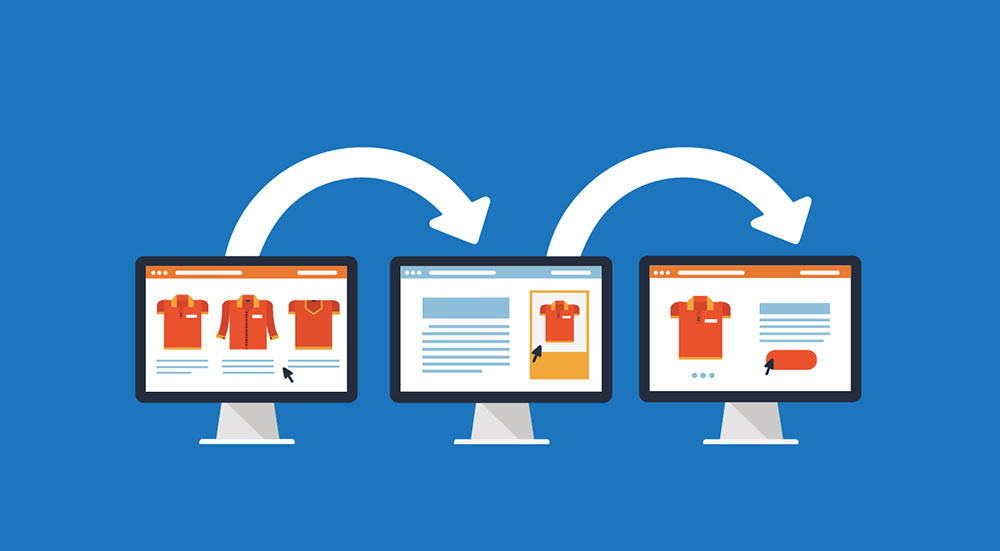Hello!
55% of marketers say blog content creation is their top inbound marketing priority.
If you read SEO blogs or follow SEO experts, you would know that the SEO industry is a constantly changing industry. With every Google algorithm roll-out, there is a whole plethora of blog posts trying to deconstruct and reverse engineer it. As daunting as it sounds, the silver lining is that these changes are a safety net for SEO industry.
For instance, with recent opinions of Gary & John Muller on Heading Tags, Disavow Tool, E.A.T. and Content accuracy, there is always something new to implement or avoid in SEO strategy.
However, there is one thing that is almost undisputed and unchanged when it comes to SEO.
Yes, the backlinks.
Since Google’s inception, backlinks have retained their importance no matter what. Back in the day, they were the dominant factor of determining relevancy & authority of a site and even today they are considered as one of the most important factors for website relevancy & authority. That’s why SEO’s are majorly focused on backlinks.
Although now you don’t have to build the maximum number of links to dominate the Google SERPS, you still need to build high-quality backlinks to improve your positioning & visibility in Google.
Currently, the majority of free link building techniques like blog comments or social bookmarking are considered a red flag for your link profile. And therein lies the problem for online marketers as getting links from trustworthy sources for free isn’t easy.
As of now, content marketing is the most recommended & natural way to get backlinks than any other marketing technique when it comes to link building. And that’s one of the reasons companies are spending a lot of their marketing budget on content.
What Will Link Building Be Like in
the Coming Years?
As you know link building is the process of obtaining links from other websites, but, persuading them to do that without sounding like a desperate attempt of getting links, is not as easy as it sounds.
The only way someone is going to link to you is if you can provide him/her the value that he/she thinks is good enough to mention your links on their blogs, social profiles or website.
And, as you might have guessed, content plays an important role in this process.
But not every type of content is good for links.
The good ole Google’s advice of publishing content and wait for other websites to link to it, doesn’t work for everyone.
With all the industry talk on outreach and influencers, the current state of content marketing faces a single issue, convincing other people to link to you.
There are hundreds of content pieces published and shared every day but we are seeing that most of the time they only mention, not link back to other websites.
As if it’s becoming the industry standard, you can now find mentions of authors, companies, and products without any links. As good as it sounds for publicity, it doesn’t get you any SEO benefits. Some publishers do this so that companies can contact them later to convert their brand mention into links and they can charge an “editorial fee” for that.
Remember, the goal now is to get links from the right websites instead of getting links from many websites.
If you get links from authority sources, your authority will improve but authority websites don’t just link to every other website.
Google's crusade for improving quality versus quantity has made these authority links much more valuable as well as difficult to acquire.
Every day these sites get hundreds of requests by bloggers & outreach agencies to check their infographic or the new post they published recently. So how can you stand out among these hundreds of requests?
 The basics are still the same...
The basics are still the same...
• Create content that is interactive enough for the people to engage with it as well as valuable enough to make other websites link to it
• Make sure the content reaches the right people at the right time.
So the challenge of leveraging content marketing to get backlinks is not to just create great content but make sure that it reaches the right people who are willing to link back to it.
Sounds easy eh?
You wish.
How to Create Content That Attracts Links?
So at this point, we have established that our content marketing goal is to create content that attracts backlinks. For this, you need to create high-quality content and know the difference between a content writer and a copywriter.
 The first step in creating awesome content is to figure out why people would want to read and link to your content.
The first step in creating awesome content is to figure out why people would want to read and link to your content.
The simple answer would be - your content can help them with their problems.
But with publications of hundreds of articles on almost every topic every day, how can you possibly make your content worthy enough?
Let’s see some examples!
- Support your article with data & references.
- Link to already established authors or websites relates to your topic.
- Write actionable content.
The rule of thumb is to ensure that your content provides value to readers by offering them some sort of solution or insight.
The more useful the advice, the better will be the results, but keep in mind that certain elements of content can get you more backlinks than others.
Let's explore them:
1. Research & Data
 Using statistics in blog posts improves consumer trust.
Using statistics in blog posts improves consumer trust.
(Forbes)
Including research in your content is a sure-fire way to get backlinks. If you can prove your point with data collected via research, there is a strong chance that people will pay more attention to what you have to say. Moreover, it also attracts the reader’s attention.
Take these two examples of content:
1. Cancer - Information, Symptoms & Treatment
2. Cancer - Recent Clinical Research, Treatments & Information
Both headings seem perfect but there is a little difference. The first one implies to give you "information" only but the second one implies to gives you “data-backed information”. The second has better chances to get links because there will be some actual data in that article.
 Also collecting data is one part. The other is to present it in an easy & readable way. You need to visualize that data with images, graphs, charts or even infographics. People often tend to link to infographics easily.
Also collecting data is one part. The other is to present it in an easy & readable way. You need to visualize that data with images, graphs, charts or even infographics. People often tend to link to infographics easily.
51% of B2B marketers prioritize creating visual assets as part of their content marketing strategy. (HubSpot, 2019)
This type of content takes time and effort to create but if done correctly, it can generate a large number of quality backlinks.
2. EBooks & Guides
People love eBooks. They are even ready to share their email id for a free eBook.
If you can offer a free eBook or an in-depth guide on some topics, there is a better chance of people linking to it. A well-structured & in-depth post on some topic can be a great linking source for anyone who is writing or publishing content on a related topic.
Plus this type of content can act as your lead generation method as well.
3. Case Studies & Real Life Examples
People love to read & share content with which they can relate to.
If you can provide real-time case studies on some topics, it can attract a lot of links as well as engagement. People love to share and comment on this type of content as the conclusion will be either confirming or rejecting their hypothesis.
Another benefit of this type of content is that it’s easy to put it on influencer’s radar plus it can be implemented in almost any niche or business category.
So now you have an idea of how to create a magnificent piece of content including the content factors that can attract links. But your job isn’t ended yet, in fact, it just started.
Now you have to work on a content distribution plan that will allow you to reach the right people.
Let’s see how we can do that. First, we suggest you to check our list of the best 45 off-page SEO techniques out there. These resources will help you a lot, we can guarantee it!
The Content Distribution Plan
This brings us to our initial issue of content marketing - convincing people to link to us.
You have a great piece of content that took you a couple of days to complete. You did your research, make your content appealing and you genuinely think that you have created something valuable.
But what if your content doesn’t get the attention it deserves?
Most of the time the fault isn’t in the content but in its distribution plan. Let’s be real…publishing something and then waiting for people to start spreading it doesn’t work for everybody. Unless you are publishing your content on an already established website with thousands of visitors, chances are that your content, with all its glory, would be a lost treasure.
To make sure that your efforts don’t go to waste, you need to make sure that your content reaches to right people.
Let’s check out some methods to do that:
1. Identify & Pitch To Influencers
The most repeated and common advice you'll see in content marketing is to persuade an influencer to share your content. This fact alone should tell you why this part is important. But here we face another issue.
A person who is considered an influencer keep getting these types of pitches all the time. Some of them won’t even shy to make you a bad example or make fun of you. Remember that your goal is to get a positive mention by the influencer.
To successfully pitch your content to an influencer you need to know what type of content that influencer often share. You don’t need to be Professor X for this as, luckily, there are some tools available for that.
For example, let’s say you create a content piece for a website that deals with dog toys.
For starter, you can go to twitter (or any other twitter related tool) and search for dog toys. You will get a list of people who are either posting content/images about dogs.
For this article, we used shareit.socialpilot.co/ (for example only) and searched dog toys and then go to the influencer tab. These were the results:
Although the results are very few out of these we found this profile twitter.com/fundogs with 6K followers and a good blog. With other search variations, we found twitter.com/citydogmagazine & twitter.com/dawgblogger
Now the second part is to interact with them and pitch your content to them. The best way is to start retweeting or replying to their tweets or ask them a question. Warm them up a bit before you pitch them your content.
Pro Tip: Ask an influencer to provide his views on something. Ask them for a quote or their point of view on a certain topic. Add it in the content and there is a good chance that the influencer will share your content.
You can do the same thing on Facebook or Instagram manually or you can use some tool to do that for you. Now, most of these influencer finding tools are paid. So you have to search a bit to find free alternatives. It’s not easy and it will take time but that’s how things are.
2. Paid Advertising
Let’s face the truth here. It’s hard to portray a small or a new website as an authority on a subject. Also, most of the influencers usually like to link back to already established and known sites.
So to get that initial traction, you need to invest in paid advertising for your content. Run a small Facebook campaign to gather some likes and engagement to make your post looks worthy enough to be linked by influencers. Paid advertising is also the best way to get your content in front of your target audience.
3. Outreach
The best way to get links to your content piece is to find recently published content in your niche. Luckily we have Google Alerts for that.
You can set up Google alerts for the search terms related to your industry and get recently published articles in your inbox. You can then reach out to these blogs or websites and ask them to link to your content.
A recently published article on a blog is more likely to modify their content to link to your relevant content as compared to an article published months ago.
Another great way is to reach out to bloggers doing content roundups.
You can search your keyword/niche in Google with the following combinations:
- Roundup
- Weekly
- Monthly
- Best of
- Top 10
Say you are looking to promote your pet-related content. You can search "pet articles roundup" or intitle:roundup “pets” in Google and reach out to the bloggers to ask them to include your content in the next roundup.
Similarly, you can write posts for other blogs and build relationships with them. You can then leverage these connections for your content marketing plans. You need to understand that finding blogs you can contribute to, outreach to them and creating content that respects their guidelines is very time consuming and that's one of the reasons why many companies decide to outsource search engine optimization.
4. Engage with Your Community
There are niche communities in almost all categories. You have sub-reddits, Facebook groups, etc. Join these communities and participate actively.
Share valuable content, answer people queries and once you find an opportunity, mention your content or brand as well.
You can also use Quora for this purpose. If a company like ahref’s is doing it then we think you should too.
If you have an email subscriber list, use them to promote your content. These are the people who are already interested in your site & content and are more willing to share your content on their social profiles.
Final thoughts on Content Marketing and SEO
With the ever-increasing demand for outreaching services, the content marketing industry will get tougher with each passing day. If you want your content marketing strategy to be successful, you need to explore every promotion channel and use it for your advantage.
Remember that the content which gets hundreds and thousands of engagement and links are created and planned by using the same techniques that we mentioned earlier. Over time they have built connections and relationships with influencers and industry experts. And now they can achieve great results with minimal efforts.
For a new site, it will be initially hard to persuade people to link to the content but if you keep building lists, keep promoting content and keep building the relationships, eventually, every piece of content you write will become a backlink magnet.
Remember that the simplest and the most valuable content is the one that helps solve user problems, in addition to offering them the answers they seek.
Thank you!
Subscribe to our newsletter! Join us on social networks!
See you






